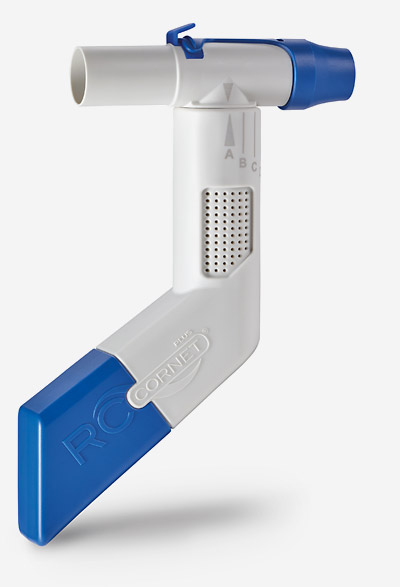Bronchiectasis
Patients with frequent respiratory tract infections or pulmonary diseases (such as mucoviscidosis, COPD, asthma, pneumonia, tuberculosis), are those primarily affected by bronchiectasis. In approximately 14 percent of patients, the bronchiectasis is congenital.

Causes of bronchiectasis
Frequent respiratory tract infections can cause a diminishing elasticity of the lungs due to destruction of the connective tissue. This process can lead to the formation of sack-like protrusions in the bronchi that do not degenerate – bronchiectasis.
The protrusions, in which viscous phlegm collects, are an ideal breeding ground for pathogens and harmful substances. Bronchiectasis thus increases the risk of recurring infections among affected persons, or may help preserve already-existing infections.
Symptoms and diagnosis
- Coughing (sometimes bloody) with secretions
- Frequent respiratory tract infections
- Shortness of breath
- Bronchial cramping (bronchospasms)
- Thoracic pain
Possible bronchiectasis should especially be considered in cases of asthma or COPD patients who do not respond to guideline-based treatment.
Even in younger patients or lifelong non-smokers, the described symptoms are a possible indication of bronchiectasis.
The diagnosis is made with the aid of image-guided procedures – X-ray imaging and computerised tomography (CT) – as well as additional tests such as a lung function test, a sputum analysis, and a bronchoscopy.
Bronchiectasis: Therapy
Depending on the underlying disease, medications used are bronchodilating and anti-inflammatory drugs, mucus-loosening agents, and antibiotics.
Aside from medication-based therapy, patients have additional options for treatment:
- Respiratory physiotherapy has the primary goal of removing stubborn phlegm from the bronchial system. Such therapy involves, for example, special coughing techniques, percussion massage, and respiratory exercises.
- Use of respiratory therapy devices such as the RC-Cornet® – or its further development, the RC-Cornet® PLUS – free the lungs from phlegm and make expectoration easier.
- Regular saline solution inhalations with nebulisers moisten the airways and prevent infections.
- An increased intake of fluids reduces the thickness of the mucus and makes expectoration easier.
- Inoculations against the flu virus (annual) and pneumococci reduce the risk of infection.
- In exceptional cases, surgical removal of the bronchiectasis is also a treatment option.
Subscribe to our
BREATHE EASY Newsletter
Tips and information on healthy airways!
- for all who wish to breathe better
- free of charge and convenient e-mails
- compact newsletter once a month
For all those who deal with pneumological topics related to the respiratory tract in a professional context, please find here the subscription to the CEGLA FACHNEWSLETTER.

